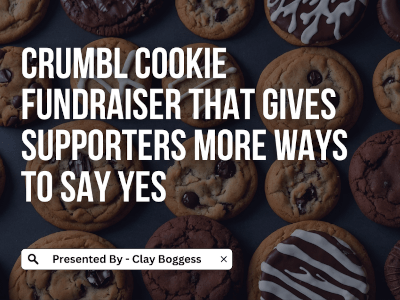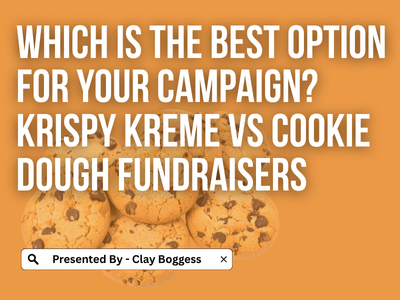
Blog Summary: This expert strategy outlines high-profit football fundraising ideas and a clear plan for school teams. We emphasize setting SMART goals and securing all legal clearances early. We detail five effective methods: Community Service, Food Sales, Discount Cards, Peer-to-Peer, and Merchandise, while clarifying their execution requirements, risk management, and the strong profit potential of digital campaigns. Ultimately, success hinges on prioritizing profitable strategies and ensuring maximum player accountability through clearly defined goals.
The costs of running a successful high school football team escalate yearly. Whether aiming for upgraded helmets, travel funds for out-of-state competitions, or better training equipment, generating funds is a necessary part of the game plan. We can’t rely solely on school budgets; we need proactive, strategic football fundraising ideas that deliver maximum return with minimal effort.
Key Highlights
Strategy First: Before launching any campaign, we must establish a clear financial goal and a corresponding "Items Per Player" quota using the SMART framework.
Legal Clearance is Mandatory: Every major fundraising initiative for football teams, especially those involving food sales, cash handling, and public services, requires pre-approval from the school principal or booster club oversight.
High-Profit Margin Focus: We must prioritize campaigns with proven margins, often exceeding 50%, such as Peer-to-Peer campaigns and high-demand Merchandise Sales.
Player Accountability: Success hinges on breaking the total goal down into achievable personal targets for each athlete and using digital tools to track their progress in real-time.
Marketing the "Why": We should never sell a product; we must market the mission (e.g., "Help us afford new concussion-rated helmets").
Building Your Football Fundraising Game Plan
Before we examine the five best ways to raise money for a football team, we need a solid foundation. Planning should begin three to six months prior to the start of the season, ideally in early summer, to allow for vendor negotiation, permit acquisition, and strategic scheduling.
Why Your Football Team Needs Dedicated Fundraising
The reasons for a football team's fundraising drive go far beyond basic operational costs. When we effectively answer the question, "Why are we raising money?" we increase donor participation tenfold. Funds are often needed to replace old helmets with the latest models, update padding, or purchase sophisticated training gear (sleds, tackling dummies) that reduce player contact during practice, making safety a top priority.
We need funds to cover the costs of buses, meals, and lodging for away games, particularly those at regional or state-level competitions. Furthermore, funding can support off-season training camps, leadership workshops, or team-building outings, such as attending a professional game, which significantly boosts team morale and cohesion. Finally, we can use raised funds to provide scholarships for players who need financial assistance to attend summer camps or specialized athletic training clinics.
Setting SMART Fundraising Goals
The generic question, "How much money can we raise?" is unhelpful. Instead, we use the SMART framework to set an achievable goal: Specific, Measurable, Achievable, Relevant, and Time-bound. For example, we need $15,000 for 30 new five-star-rated helmets. Based on our 50-player roster, this means each player needs to raise $300. By setting a clear per-player quota, we instill ownership and accountability, both of which are essential for a successful fundraising initiative in a football program.
1. Offer Community Services
This classic football fundraiser uses the team’s physical energy to foster community goodwill and earn donations.
Execution and Logistics
We specialize in seasonal, high-demand services, including car washes, lawn aeration/leaf raking, moving heavy items, painting, and senior assistance (such as yard work and gutter cleaning). This method has a very low cost (just T-shirts and basic supplies) but a high effort requirement due to the physical labor and scheduling logistics.
CRITICAL: The school or booster club must draft a simple liability waiver for clients to sign, acknowledging that the team is not a licensed service contractor and that student volunteers provide the service.
The school administration must clear this risk mitigation step. We avoid hourly rates, which can feel transactional. Instead, offer project-based suggested donations (e.g., "$50 suggested donation for a full car wash") or time-block donations (e.g., "$100 suggested donation for four hours of yard work by a two-person team"). Centralize scheduling through a free online signup tool, and assign one adult coordinator (parent/coach) to oversee logistics and serve as the community's primary point of contact. We market this as "Locker Room Labor: Support Your Local Gridiron," emphasizing that the students are investing their sweat equity in their cause.
2. The Food Fundraiser
Food sales remain a profitable staple but carry the highest regulatory hurdle. We focus on two primary types: Concession-style and Catalog/Brochure sales.
Execution and Logistics
MANDATORY: We must check state and local health department guidelines if selling prepared food (e.g., hot dogs), a Temporary Food Permit or Health Department Clearance may be required, which often takes weeks. We frequently focus on pre-packaged, non-perishable items (such as candy bars, cookie dough, and popcorn) to minimize liability and permitting headaches. Inventory costs typically range from 50% (for pre-packaged goods) to 70% (for raw goods used in concessions), so we aim for a Profit Margin Goal of 50% or more on the retail price. Over-ordering perishable food can lead to significant losses due to spoilage, so we must avoid large upfront cash outlays.
We maximize sales by setting up concessions at multiple events, not just football games (e.g., volleyball matches, band concerts, and other similar events). We use a "pop-up" table between class periods with permission. We also utilize Catalog/Brochure Sales, partnering with a national fundraising company to offer high-margin items, such as cookie dough. This approach provides the advantage of zero upfront inventory risk, as students collect orders first and the team places a single bulk order. Maximizing visibility and utilizing digital payments (such as Square and Venmo QR) are crucial for all food sales.
3. Discount Cards
Selling local business discount cards is a time-tested way for football teams to generate revenue by leveraging community partnerships.
Execution and Logistics
We target businesses frequently patronized by families, such as pizza places, oil change services, and local salons. We approach them with a clear value proposition: "We will guarantee X number of new customers over 12 months." The business provides the discount (e.g., 10% off), and we offer free local marketing in return. We can partner with national discount card vendors, which is easier but yields a lower profit margin (they take 30-40%), or print the cards ourselves, which is more challenging but offers a higher profit margin. A typical card sells for $15–$25.
If the goal is $10,000 and the net profit per card is $15, we need to sell 667 cards, broken down into a specific quota per player. We must train players on a simple, 30-second sales pitch that focuses on the savings the buyer receives, rather than the team's needs. CRITICAL: Ensure a written agreement is in place with every local vendor, detailing the discount offered and the card's expiration date (which must be at least one year in the future), to help maintain our reputation within the community.
4. Peer-to-Peer (P2P) Digital Campaign
In the modern fundraising landscape, digital peer-to-peer (P2P) campaigns are one of the most effective ways to raise money for a football team, thanks to their low overhead and vast reach.
Execution and Logistics
We chose a dedicated platform integrating secure payment processing and individual player pages. While platforms typically charge 5-8% in transaction and processing fees, the administrative burden is near zero, resulting in a phenomenal 90–95% profit margin. Every player's page must feature a compelling, short video or personalized message; it cannot be generic. The player must state their personal goal and how it will help them (e.g., "I need to raise $300 to pay for my summer agility camp"). Donors give to people, not causes; the personal story is the key driver of conversion.
Players market to their networks through personalized emails (yielding the highest conversion rates), direct text messages (ensuring immediate responses), and social media shares (enabling broad reach). We schedule the campaign to have a strong launch day and a "Final 72-Hour Push" to drive urgency. The platform provides real-time leaderboards and tracking, which Coaches and coordinators use for incentives and accountability.
5. School Spirit Merchandise Sale
A well-executed School Spirit Merchandise Sale generates high revenue and builds lasting support for the football team, requiring a balance of high-profit items with mass-appeal items.
Execution and Logistics
We categorize products into two types: High-Profit Items (Such as Hoodies, custom-designed jerseys, and hats, with margins often ranging from 40-50%) and Mass-Appeal Items (Including Bumper stickers, keychains, and water bottles, which have low margins but high volume). We always offer a $5 item, a $25 item, and an item valued at $ 50 or more to capture all potential donor levels. We have two options for sourcing:
Print-on-Demand/Online Store (zero upfront cost, lower profit margin of 15-30%) or Bulk Ordering (high upfront cost, highest profit margin of 45-65%).
For new teams, we recommend Print-on-Demand first to test demand before committing capital. MANDATORY: Any use of the school's logo, colors, or mascot must be formally approved by the school board or Athletic Director to avoid legal issues. We should utilize a professional designer for clean, appealing graphics. We sell via our online store (essential for alumni) and In-Person (during lunch periods, at all sporting events, and in partnership with local businesses to display merchandise near the checkout). Asking a local café or sports shop to sell on a consignment basis helps expand our reach.
Essential Logistics and Risk Management
Every aspect of our football fundraising plan must be legally and administratively sound to ensure we maximize profit and minimize liability.
Legal and Policy Clearances
We must clarify whether we use the school's 501(c)(3) non-profit status or the Booster Club's. All donations (not purchases of goods/services) over a certain amount typically require a formal tax-deductible receipt, which the authorized entity must issue. We need a formal system for cash collection. When counting cash, at least two adults (a parent/coordinator and a coach) must be present. Funds must be immediately deposited into the authorized account and never held by a student or a single adult for more than 24 hours. For door-to-door or public sales, students must adhere to a strict "buddy system" and obtain written parental consent forms before engaging in any off-campus solicitation.
Cost Analysis and Profit Margin Priority
When choosing among football team fundraising ideas, we must calculate the net profit margin, not just the gross revenue. The highest net margin methods are Peer-to-Peer (90–95% after fees) and Community Services (90–100%), as they require little to no inventory capital. Discount Cards and Merchandise (Bulk) are mid-range (45–70%), while Food (Pre-Packaged) is typically the lowest (30–50%). We advocate prioritizing the methods with the highest net margin as they offer the most direct path to our financial goals.
Selection and Maximizing Player Buy-In
A successful football fundraiser is about more than just money; it's about team unity and developing leadership skills.
How to Select the Right Combination
The most successful teams run a multi-pronged strategy. They often use a high-visibility, short-burst campaign, such as the Peer-to-Peer challenge, as a September launch Campaign, which is followed by a low-effort, high-volume campaign, such as Discount Cards or the online Merchandise Sale, as a sustained campaign that runs passively throughout the season. Finally, they may host a high-effort, high-community engagement event, such as a specialized Community Service project, as a final push post-season.
The Role of Player Buy-In
If the players don't own the mission, the campaign will fail. We create a tiered incentive system beyond simple prizes. Examples include the top-selling player getting to choose the team’s pre-game meal one week, or the top five sellers receiving new, customized cleats. We use the team's leadership, the QB, captains, and star seniors, to set the standard and challenge others. Crucially, we must allocate practice time to discuss fundraising progress, share sales tips, and showcase successful sales pitches, demonstrating to the team that the coaches and parents value their effort as much as the time spent practicing.
Football Fundraising FAQs
Here we answer common questions about successful fundraising for football.
When is the absolute best time to launch our major football fundraiser?
While planning should start in the summer, the launch should strategically align with the peak of school spirit and community engagement, which typically occurs at the start of the school year, specifically during the week leading up to or the week of the Homecoming game. This period capitalizes on the excitement of alumni returning, parents engaging, and the general hype surrounding the return to the gridiron.
Do we have to use a national fundraising company, or can we DIY everything?
We have the flexibility to do both. DIY methods, such as the Offer Community Services campaign, offer a profit margin of 90% or higher but require significant administrative effort from parent volunteers. National companies (for catalogs, P2P platforms, or discount cards) typically take a significant percentage (30-40%) but handle all regulatory compliance, payment processing, and inventory risk, making them an excellent choice for volunteer groups with limited time and resources.
How do we handle sales tax and legal requirements for money raised?
Depending on local and state law, sales tax must be collected on sales of physical merchandise or food unless your school’s 501(c)(3) status grants a specific exemption for limited fundraising days. We must consult the school’s finance office or the Booster Club treasurer. Cash donations are generally tax-exempt and require a receipt if the donor requests one, but purchases of products are considered taxable sales in most jurisdictions.
How can we reach alumni who are no longer in the local area?
The Peer-to-Peer Digital Campaign and an online School Spirit Merchandise Sale are the most effective methods for reaching non-local alumni. We recommend targeting the alumni network using the school's social media channels and creating a dedicated email blast list. Alumni are often sentimental and frequently one of the most generous donor segments for raising money for the football team.
We have a small team (fewer than 20 players). Which idea is best?
Small teams should focus exclusively on low-overhead, high-margin campaigns to maximize individual effort. The Peer-to-Peer Digital Campaign is the top choice, as it relies on the size of each player’s personal network, not the size of the team. Secondarily, the Offer Community Services model is effective because it depends on focused labor, which a tight-knit, smaller group can execute efficiently and highly.
Author Bio
Clay Boggess has been designing fundraising programs for schools and various nonprofit organizations throughout the US since 1999. He's helped administrators, teachers, and outside support entities such as PTAs and PTOs raise millions of dollars. Clay is an owner and partner at Big Fundraising Ideas.



